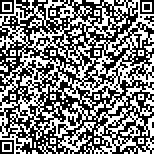| This Paper:Browse 2850 Download 361 |

码上扫一扫! |
|
| AmandaLAMPTON,JohnVALASEK,MrinalKUMAR |
|
|
| (Systems Technology, Inc., 13766 S. Hawthorne Blvd;Department of Aerospace Engineering, Texas A&M University;Department of Mechanical & Aerospace Engineering, University of Florida) |
|
| 摘要: |
|
| 关键词: |
| DOI: |
| Received:January 11, 2011Revised:April 01, 2011 |
| 基金项目:This work was partly supported by the Air Force Office of Scientific Research, USAF (No.FA9550-08-1-0038), and the National Science Foundation under a Graduate Research Fellowship. |
|
| Multiresolution state-space discretization for Q-Learning with pseudorandomized discretization |
| Amanda LAMPTON,John VALASEK,Mrinal KUMAR |
| (Systems Technology, Inc., 13766 S. Hawthorne Blvd;Department of Aerospace Engineering, Texas A&M University;Department of Mechanical & Aerospace Engineering, University of Florida) |
| Abstract: |
| A multiresolution state-space discretization method with pseudorandom gridding is developed for the episodic unsupervised learning method of Q-learning. It is used as the learning agent for closed-loop control of morphing or highly reconfigurable systems. This paper develops a method whereby a state-space is adaptively discretized by progressively finer pseudorandom grids around the regions of interest within the state or learning space in an effort to break the Curse of Dimensionality. Utility of the method is demonstrated with application to the problem of a morphing airfoil, which is simulated by a computationally intensive computational fluid dynamics model. By setting the multiresolution method to define the region of interest by the goal the agent seeks, it is shown that this method with the pseudorandom grid can learn a specific goal within ±0.001 while reducing the total number of state-action pairs needed to achieve this level of specificity to less than 3000. |
| Key words: Reinforcement learning Morphing Random grid |

